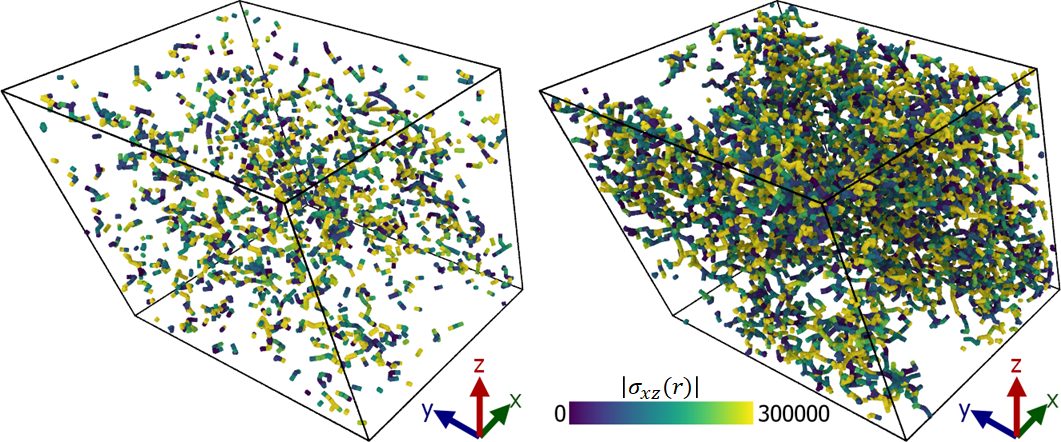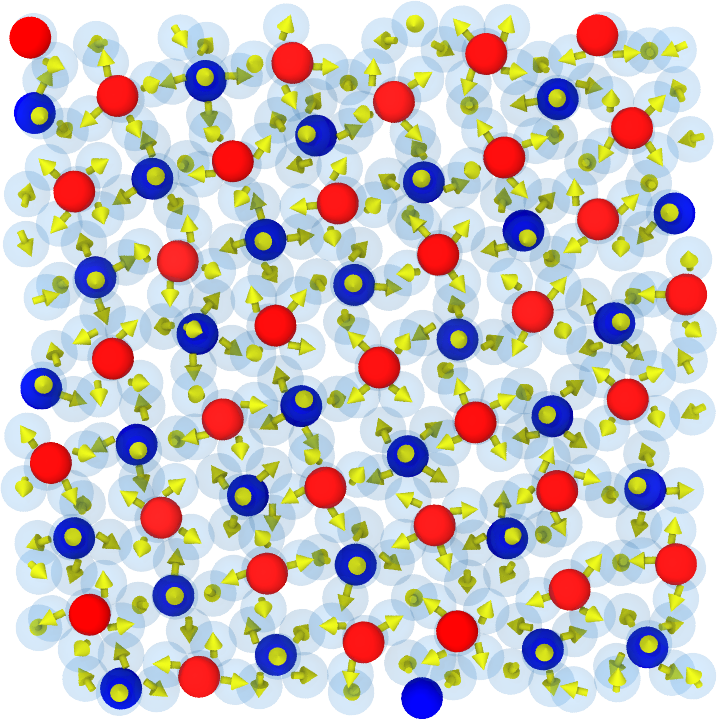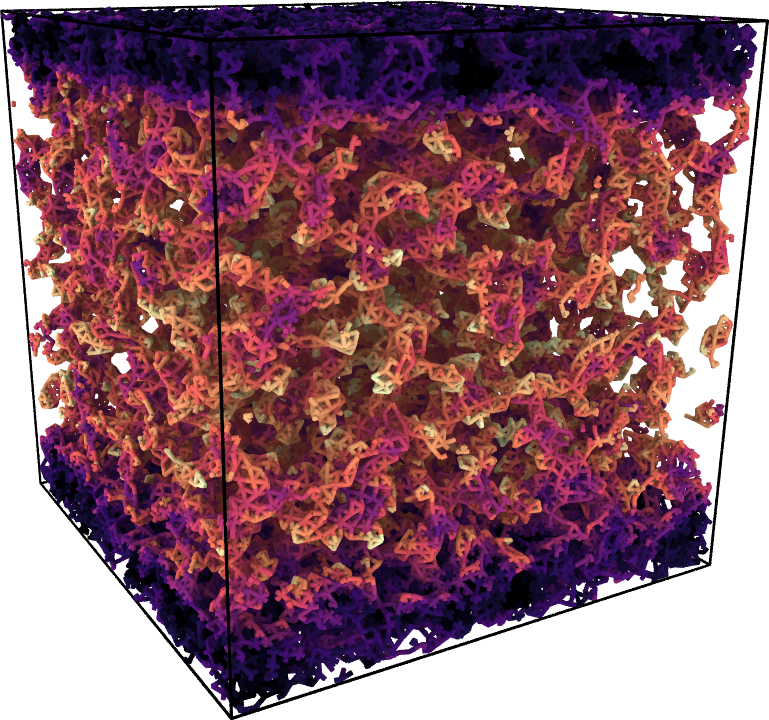Computational and Statistical Physics
I started my career in physics as a Ph.D. student at Georgetown University, working with Prof. Emanuela Del Gado. There I became interested in computational and statistical physics, applying advanced mathematics to the study of physical systems. I ended up in the world of soft matter physics–an interdisciplinary field bringing together aspects of statistical physics, chemistry, engineering, and more. My dissertation was focused on the study of cement, which is a surprisingly unique and complex material. I worked on projects related to understanding hydration in the presence of chemical gradients and explaining the electrostatic origins of cement cohesion. Each of these involved developing new mathematical models, translating them into large-scale computer simulations, and analyzing data from those simulations to derive physical insights.
After defending in the midst of a pandemic in 2020, I became a postdoctoral researcher at NIST (National Institute of Standards and Technology). There I built models to study large-scale suspensions: investigating particle ordering under shear and the microstructural origin of discontinuous shear thickening. I received an NRC fellowship for my independent research proposal to build a modeling framework for additive manufacturing (AM) with cement/concrete, and quickly expanded to working on ceramic AM as well.
Below are links to my Google Scholar Profile and a direct link to pdf copies of all my papers.
Modeling particle suspensions: from microstructure to rheology

At NIST, I developed a modeling framework that enabled simulations of suspensions with 10-100x more particles than previously studied. The scale of the simulations I performed allowed me to make new discoveries about the microstructure that underlies the rheological properties of suspensions. In a set of Journal of Rheology papers, I discuss two very different types of microstructure associated with two very different types of rheological phenomena.
The first dealt with ordering of frictionless particles and shear thinning. As seen in the above snapshots, large domains of crystal-like ordering can emerge in sheared suspensions with stiff particles and no friction, due to mainly an entropic effect as those crystalline regions can be more densely packed.
The second paper dealt with the case of frictional particles and rigidity percolation within shear thickening suspensions. Discontinuous shear thickening (DST) is the counter-intuitive phenomenon by which a suspension becomes more solid-like the harder you push it. While scientist believe this arises due to particle friction, the microstructural origin of this phenomenon has remained a mystery for decades. My recent work identifies, for the first time, the microstructural units whose percolation is the origin of DST.

The snapshots above show these microstructural units, which correspond to constrained particles, in a 58% volume fraction suspension. The two images are from the same suspensions, sheared at the same rate, but with different instantaneous stresses. The percolation of the constrained particles corresponds exactly to spikes in the suspension stress, and the critical rate corresponding to this percolation also corresponds to DST.
The physics behind cement: from electrostatics to gels

Like-charge attraction and cement cohesion
Can two like-charged particles attract? Intuitively, this seems nonsensical, but the answer is yes. Like-charge attraction is a surprisingly common phenomenon in nature, due to the mediation of oppositely-charged counter-ions. In fact, this strange phenomenon is central to global infrastructure! In my Science Advances paper, I showed that this attraction can be orders of magnitude stronger than previously thought and that it is the origin of cement cohesion–solving the centuries old mystery of “why is cement sticky?”

Gradient-driven gelation of cement
Cement setting, often confused for a drying process, is actually driven by a chemical hydration reaction. This is a process which occurs far out of equilibrium, whereby Calcium-Silicate-Hydrate (CSH) particles are precipitated and form a dense gel under the influence of strong chemical gradients. My research about how these gradients affect the aggregation of CSH and its growth into a densely connected gel is explained in this J. Phys. Chem. C paper.